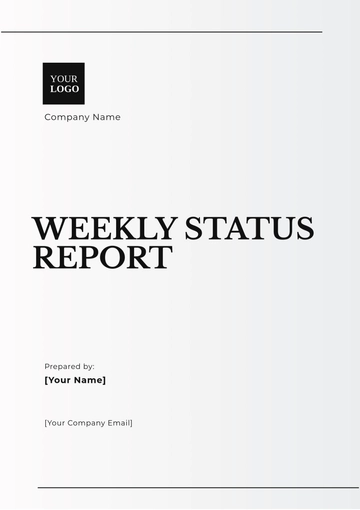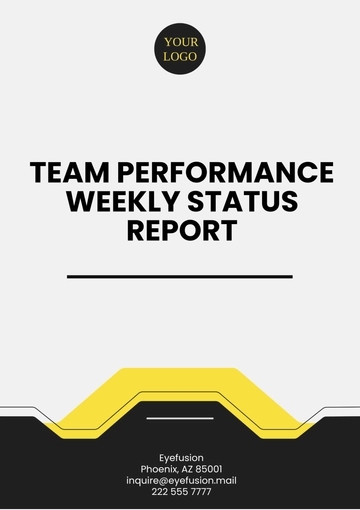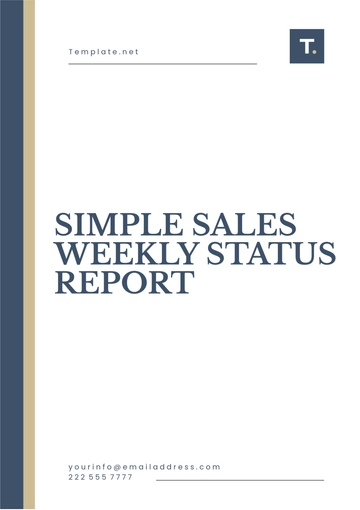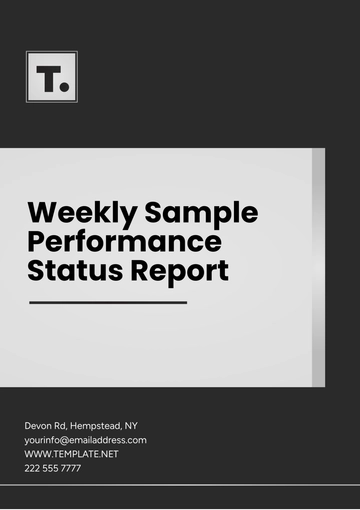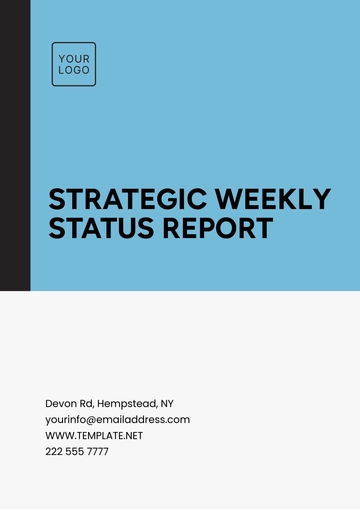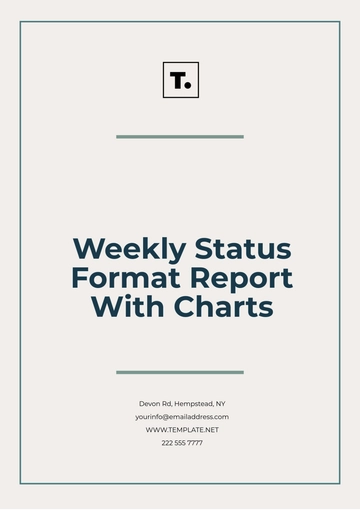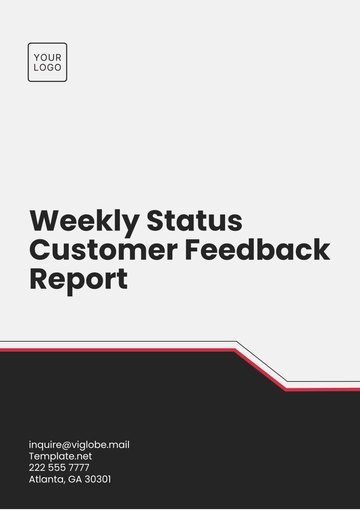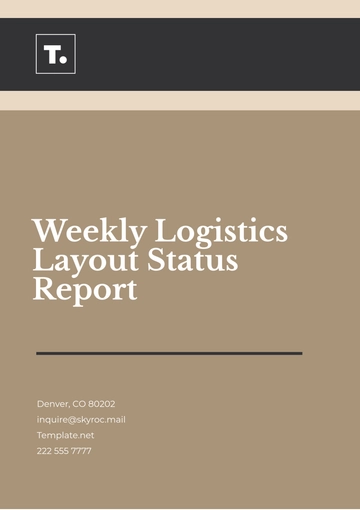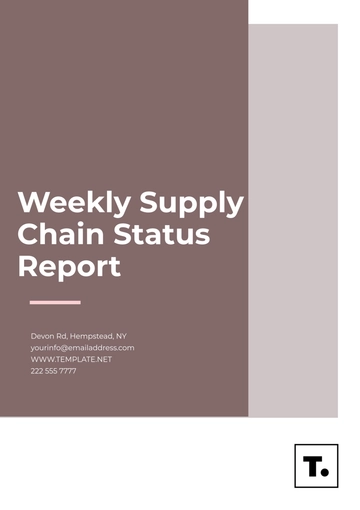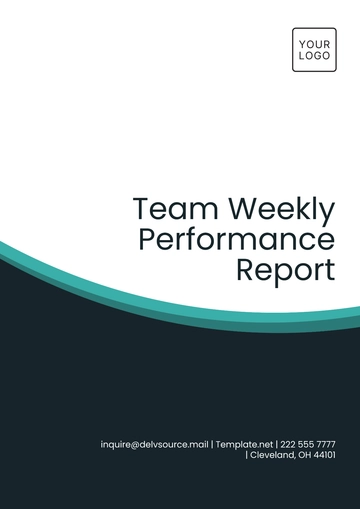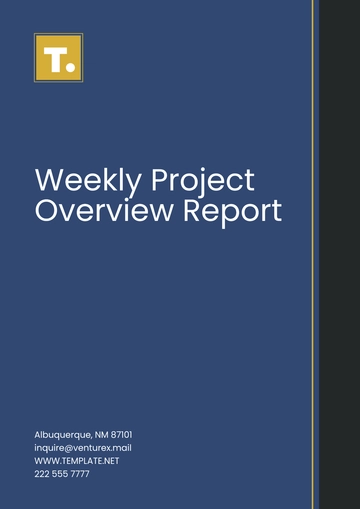Free Weekly Logistics Report
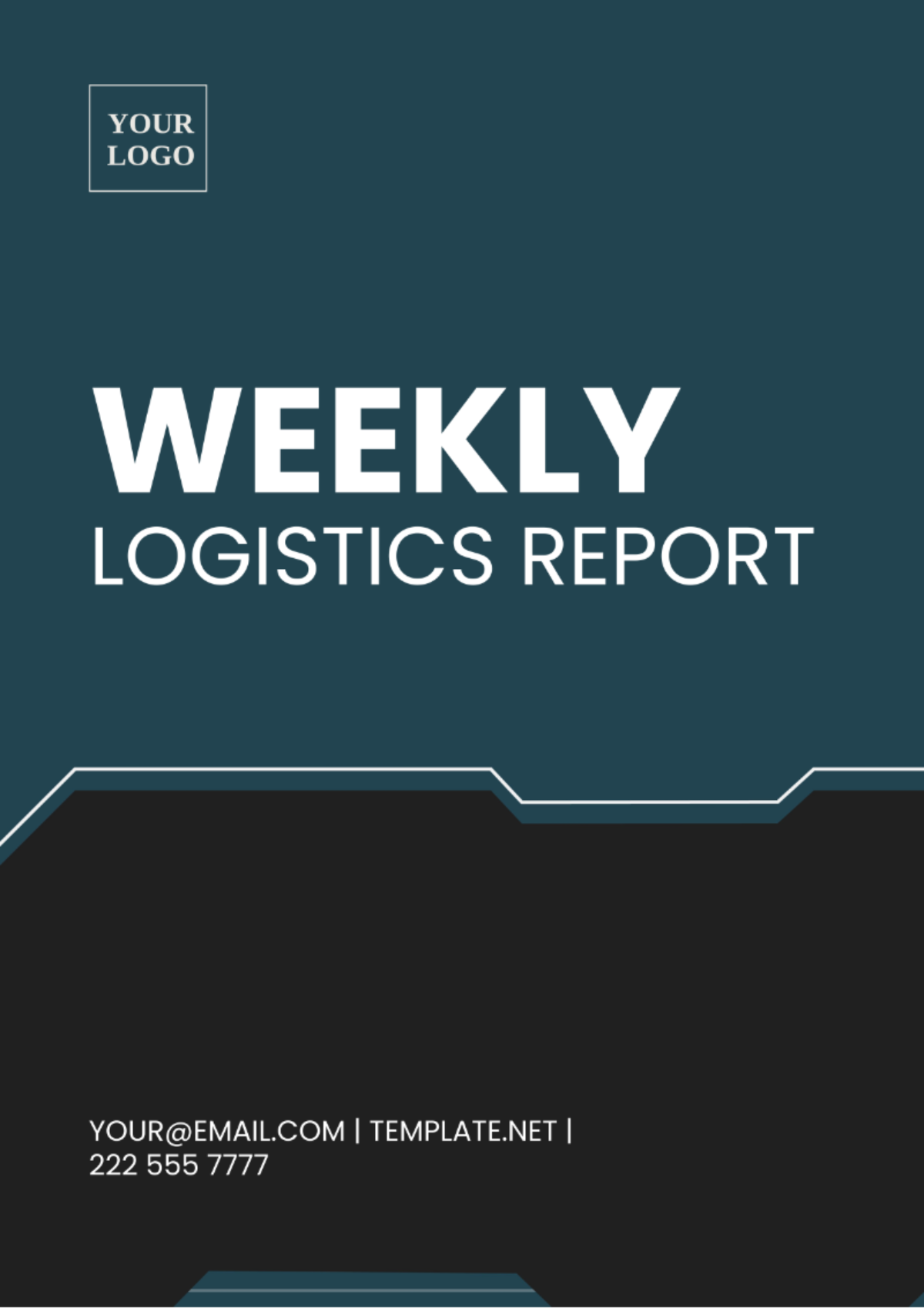
Prepared By | Company | Date Prepared |
|---|---|---|
[YOUR NAME] | [YOUR COMPANY NAME] | [DATE] |
I. Introduction
The Weekly Logistics Report serves as a crucial tool for monitoring and evaluating the logistics operations of [YOUR COMPANY NAME] on a weekly basis. This report aims to provide a comprehensive analysis of key metrics and performance indicators tracked in the logistics department. By documenting the progress against predefined targets, stakeholders can gain valuable insights into the efficiency and effectiveness of logistical processes.
Purpose
The purpose of this report is to:
Track and analyze key performance indicators (KPIs) related to logistics operations.
Identify trends, patterns, and deviations from established targets.
Provide stakeholders with timely insights to support decision-making.
Recommend strategies for optimizing logistics efficiency and achieving organizational goals.
Scope
This report will focus on analyzing the performance of logistics operations within [YOUR COMPANY NAME]. It will cover key metrics related to transportation, warehousing, inventory management, and distribution.
II. Methodology
To gather relevant data and insights for this report, a combination of quantitative analysis and qualitative assessment methods were employed. This included:
Data Collection
Logistics Records: Gathering data from logistics records, including transportation schedules, delivery logs, and inventory reports.
Stakeholder Interviews: Engaging with key stakeholders in the logistics department to gain insights into performance trends and challenges.
Performance Metrics: Analyzing performance metrics such as delivery times, inventory turnover rates, and transportation costs.
III. Findings
Current Status
The analysis reveals the following findings regarding the performance of logistics operations at [YOUR COMPANY NAME]:
Efficiency Level: [DESCRIPTION OF EFFICIENCY LEVEL]
Strengths: [DESCRIPTION OF STRENGTHS]
Weaknesses: [DESCRIPTION OF WEAKNESSES]
Challenges
Several challenges were identified during the assessment, including:
Challenge 1: [DESCRIPTION OF CHALLENGE 1]
Challenge 2: [DESCRIPTION OF CHALLENGE 2]
Challenge 3: [DESCRIPTION OF CHALLENGE 3]
Opportunities
Despite the challenges, there are significant opportunities to optimize logistics operations:
Opportunity 1: [DESCRIPTION OF OPPORTUNITY 1]
Opportunity 2: [DESCRIPTION OF OPPORTUNITY 2]
Opportunity 3: [DESCRIPTION OF OPPORTUNITY 3]
Opportunity 4: [DESCRIPTION OF OPPORTUNITY 4]
Opportunity 5: [DESCRIPTION OF OPPORTUNITY 5]
IV. Analysis
Key Metrics
Delivery Times: [ANALYSIS OF DELIVERY TIMES]
Inventory Turnover Rates: [ANALYSIS OF INVENTORY TURNOVER RATES]
Transportation Costs: [ANALYSIS OF TRANSPORTATION COSTS]
Trends
Trend 1: [DESCRIPTION OF TREND 1]
Trend 2: [DESCRIPTION OF TREND 2]
Trend 3: [DESCRIPTION OF TREND 3]
Trend 4: [DESCRIPTION OF TREND 4]
V. Recommendations
Based on the findings, the following recommendations are proposed to enhance logistics efficiency:
Recommendation 1: [Description of Recommendation 1]
Recommendation 2: [Description of Recommendation 2]
Recommendation 3: [Description of Recommendation 3]
Recommendation 4: [Description of Recommendation 4]
Recommendation 5: [Description of Recommendation 5]
VI. Conclusion
In conclusion, the Weekly Logistics Report provides valuable insights into the performance of logistics operations at [YOUR COMPANY NAME]. By addressing the identified challenges and leveraging the opportunities, the logistics team can optimize processes and ensure the timely delivery of goods and services.
Note: This template helps track KPIs for logistics operations at [YOUR COMPANY NAME]. It's a valuable tool for analyzing performance trends and making informed decisions. Use it to enhance communication and strategic planning.
- 100% Customizable, free editor
- Access 1 Million+ Templates, photo’s & graphics
- Download or share as a template
- Click and replace photos, graphics, text, backgrounds
- Resize, crop, AI write & more
- Access advanced editor
Introducing the Weekly Logistics Report Template from Template.net! This meticulously crafted resource is both editable and customizable, providing unparalleled flexibility in tailoring reports to your specific needs. Seamlessly edit using our Ai Editor Tool, ensuring efficiency and precision in tracking your logistics operations week after week.
You may also like
- Sales Report
- Daily Report
- Project Report
- Business Report
- Weekly Report
- Incident Report
- Annual Report
- Report Layout
- Report Design
- Progress Report
- Marketing Report
- Company Report
- Monthly Report
- Audit Report
- Status Report
- School Report
- Reports Hr
- Management Report
- Project Status Report
- Handover Report
- Health And Safety Report
- Restaurant Report
- Construction Report
- Research Report
- Evaluation Report
- Investigation Report
- Employee Report
- Advertising Report
- Weekly Status Report
- Project Management Report
- Finance Report
- Service Report
- Technical Report
- Meeting Report
- Quarterly Report
- Inspection Report
- Medical Report
- Test Report
- Summary Report
- Inventory Report
- Valuation Report
- Operations Report
- Payroll Report
- Training Report
- Job Report
- Case Report
- Performance Report
- Board Report
- Internal Audit Report
- Student Report
- Monthly Management Report
- Small Business Report
- Accident Report
- Call Center Report
- Activity Report
- IT and Software Report
- Internship Report
- Visit Report
- Product Report
- Book Report
- Property Report
- Recruitment Report
- University Report
- Event Report
- SEO Report
- Conference Report
- Narrative Report
- Nursing Home Report
- Preschool Report
- Call Report
- Customer Report
- Employee Incident Report
- Accomplishment Report
- Social Media Report
- Work From Home Report
- Security Report
- Damage Report
- Quality Report
- Internal Report
- Nurse Report
- Real Estate Report
- Hotel Report
- Equipment Report
- Credit Report
- Field Report
- Non Profit Report
- Maintenance Report
- News Report
- Survey Report
- Executive Report
- Law Firm Report
- Advertising Agency Report
- Interior Design Report
- Travel Agency Report
- Stock Report
- Salon Report
- Bug Report
- Workplace Report
- Action Report
- Investor Report
- Cleaning Services Report
- Consulting Report
- Freelancer Report
- Site Visit Report
- Trip Report
- Classroom Observation Report
- Vehicle Report
- Final Report
- Software Report
